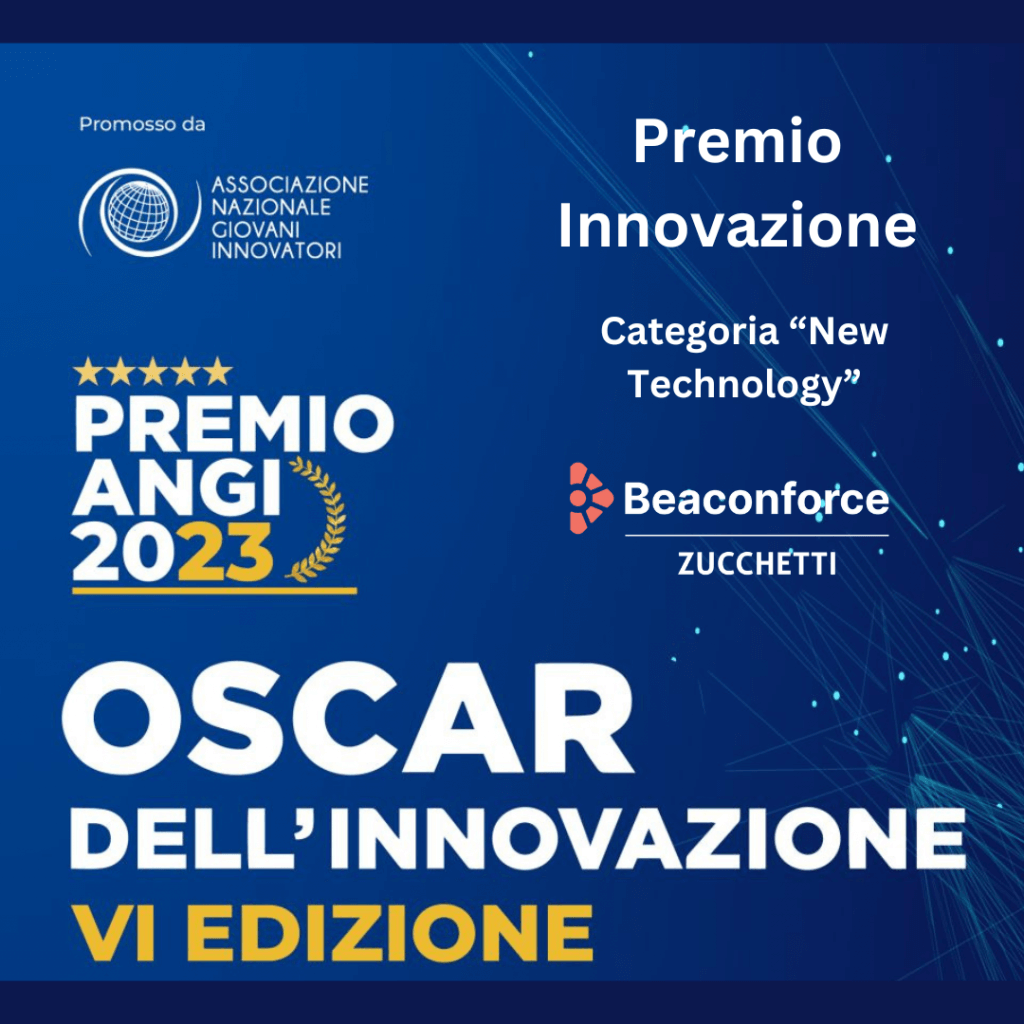Digital transformation: technology to support employee well-being – interview with Francesco Lamanda
Published
June 20, 2022
Index
- Francesco, we would like to start this interview with the very term ‘digital transformation’. What does it mean to start a digital transformation journey within a company? And what are the actions to be taken concretely?
- Why is it critical today for a company to initiate a digital transformation?
- In your opinion, can employees be prepared for this change? And if so, how?
- What are the benefits for employees working within a company that decides to initiate a digital transformation process?
- In your opinion, how important is and what should be the role of business leaders in the process of building and implementing an integrated wellness strategy?
Today, more than ever, workers have to live with various stressors that can affect their productivity as well as their psychological and physical health. Technology has been the main driver that has enabled people to work remotely from one day to the next, and this, in many cases, has blurred the boundaries between work and private life, increasing stress levels. The good news however, is that digital transformation can also provide the solution to this problem.
Digital transformation involves technologies that are constantly evolving. While a complex process and certainly not without its obstacles, digital transformation has positive effects on the development of organizations; it can help simplify agile workflows, improve communications, facilitate resource management, and support employee well-being.
To explore this topic in more detail, we had the pleasure of interviewing Francesco Lamanda, founder of People Transformation Innovation, a partner at Beaconforce, a consulting firm experienced in Human Capital Management.
With more than 30 years of experience in the consulting industry, today Francesco helps companies with key practices to ensure good people management during the delicate phases of digital transformation in the company.
The context in which we live is transforming, rather than changing. If we limit ourselves to the world of work-robotics, artificial intelligence, the metaverse-only they create a context in which everyday work undergoes a profound mutation. The new digital reality is not the world of freedom and creativity, but that of a new Scientific Management, where human action, usually not individual but team action, must promptly relate to technological activity without delay and without discrepancies.
In order to initiate digital transformation, it is necessary to give oneself the goal of implementing a system of preparing employees for the new reality, where the project of change starts with promoting conscious acceptance of a continuously changing future produced by technology in which realizing professional growth and adapting to the demand of new organizational roles requires a commitment to Continuous Learning.
This is the first action that companies must implement with the necessary commitment to communication and discussion with staff, facilitated by the availability of new platforms, such as those proposed by Beaconforce, so it is simultaneous with the action of reskilling resources, that of equipping platforms and planning a work organization by teams, clearly defining responsibilities and ownership.
I have in mind the case of a company operating in the FMCG sector that rethought its marketing by grasping all the implications of digitization capabilities to relate with customers. Hence great use of social media to capture critical expectations and also opportunities for innovation by also resorting to a technologically new approach to User Experience through virtual reality. In such a case, the action can only be preceded by a “Proof of Concept” project aimed at producing the Cultural Vision of the new way of operating and, secondly, the active participation of staff and obviously testing the hypothesis.
For those who had already initiated digital change projects, I propose the following verification system:
- What are the actors involved?
- Have you thought about a communication stream that accompanies the transition from one system to another?
-
Have you identified early adopters?
- What about ambassadors?
- Have you involved people in the design of the new process? Which ones? Do they also represent the population with respect to different functions?
- Do people (roles) know how the new system benefits them?
- What about now? How do you monitor how it is going and what steps to take?
- Has there been clarification among managers on which leadership is suitable for the new context?
Not to ask the question is to accept that you will be demoted in the competitive framework of your industry to the bottom of your ranking and at the same time cause disorientation within the business environment, and thus demotivate it since often those who work in one area are aware of what is happening in competing companies.
Of course, it makes sense to act by priority, generally the areas of greatest digital impact are digital marketing, which I have already discussed, digital development of products and services, and improving Operations with the use of robotic technology, sensors and digitally connected production equipment.
In addition, a priority cannot but be to leverage the concepts of agile organization and related technology to produce innovation in the way services and business units are managed.
First, we must be clear that what is shaping up is not just the world of digital natives, who indeed often due to the passive nature of their learning end up, with due exceptions, lacking the necessary proactivity and initiative ending up creating a crisis point for middle management.
Neuroscience, countering the old myth of cognitive decline in old age, tells us about a strategic plastic adaptation of the brain, “neurogenesis.”
Of course, if an employee has always worked in traditional ways in which he or she was a master of computer response time, he or she may run into a technical problem of connections to platforms, with time and operational constraints and without due preparation.
In such cases, it will be necessary to proceed by organizing Continuous Learning through Microtraining activities, i.e., quick micro-learning consisting of stimuli, videos, gamification experiences, and survey involvement, with a total training project time of about three months.
Of course, this is an extreme case, for the generality of employees, the key issue is to motivate them by avoiding unbalanced workloads between smart working and office work, and identifying stress areas early on.
To do this, it is necessary to create an interactive communication channel; among the various technological solutions available, I appreciated the potential of the Beaconforce platform, which presents itself as a simple tool that allows the company to enable the employee to share his or her feedback on strategic and managerial directions with the company.
There is also no lack in the service potential of the Beaconforce platform for more advanced and strategic needs, the management has the possibility to continuously monitor at the coordination level the different business teams and decide where and when to intensify communication or training actions.
The fundamental benefit is the new supply of professionalism in line with the time that the company makes, not only from a purely operational point of view, but also from a cognitive point of view in the event that the company puts in place periodic mechanisms of staff involvement to stimulate their ability to produce innovation proposals, such as participation in projects using the Design Thinking Methodology, or the periodic planning of marathons or hackathons by multifunctional experts to identify areas for improvement in all company structures.
Francesco, as you know, Beaconforce is a deep listening tool, based on sound science, that helps companies translate people’s voices into insights and predictive analytics, creating more engaging, sustainable and high-performing work environments. The companies that choose us are innovative and cutting-edge, they care about the well-being of their people. Our platform, often introduced right at the stage of corporate digital transformation, enables our clients to monitor the well-being of individuals, teams, and, more broadly, the health of the entire organization.
There is an ongoing debate as to what form of leadership is appropriate for the new context that is so discontinuous, both in terms of technology and operating conditions, and formulae are proposed that are in themselves appealing through Gentle Leadership or Care Leadership, which in any case have the merit of counteracting the culture of coercive behavior, justified by results, so prevalent among our managers.
However, we are still in the realm of conjecture or untested hypotheses.
Instead, the technology we have allows us to place ourselves in the perspective of staff well-being in the sense of being able to provide clear objectives, continuous feedback, a sense of improvement in performance management, grasping even the situation of chronic stress and managing them with both organizational and motivational interventions.
In short, leaders must place themselves in the perspective of continuous change or even more so of the transformation of the world to which they belong, which just as it makes traditional methodologies and processes obsolete, so it creates a gap between their managerial culture and the issues posed by the new context.
It is appropriate, therefore, for management not to act by conjecture or stereotyping, but to avail themselves of the benefit allowed by the new technologies of listening, processing analysis, identifying trends of liking or rejecting the leadership actions put in place enabled by Beaconforce, to produce a constant adaptation of their motivation actions to the ever-changing operational context.
It is essential to make use of them for both performance management actions and the necessary new communication streams that accompany the implementation of the new system.
Thank you very much for this interview, Francesco.
People Transformation Innovation
People Transformation Innovation, a partner of Beaconforce, is a consulting firm experienced in Human Capital Management in companies and banks in which management today faces a strategic phase in which the continuous change induced also by digital transformation requires the ability to manage a plurality of projects such as customer centricity, new work models, leadership adaptation to new organizational contexts, and employee empowerment.
People Transformation Innovation includes high standing professionals who manage the core Practices for human resource management and development, in addition the company has connections with international experts in digital change.
Articles and news

